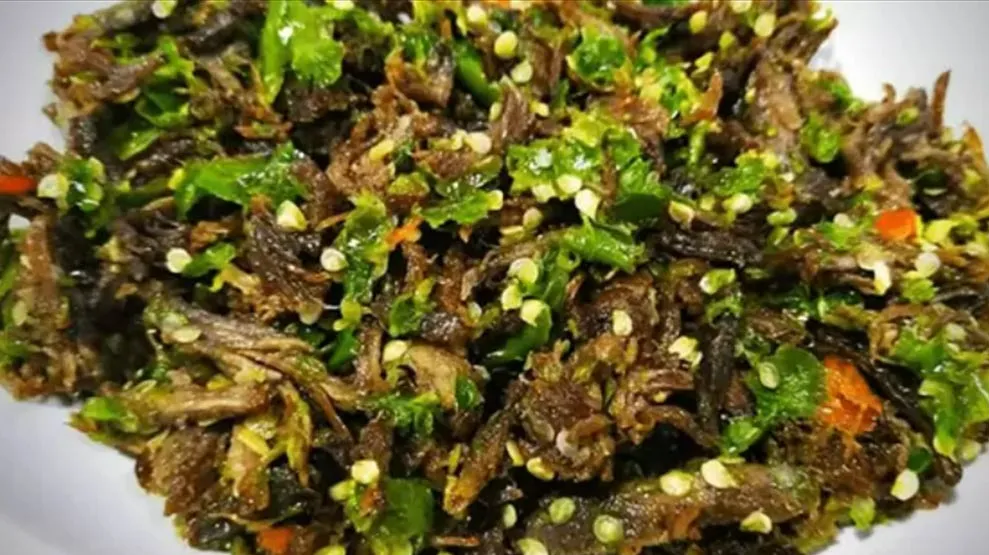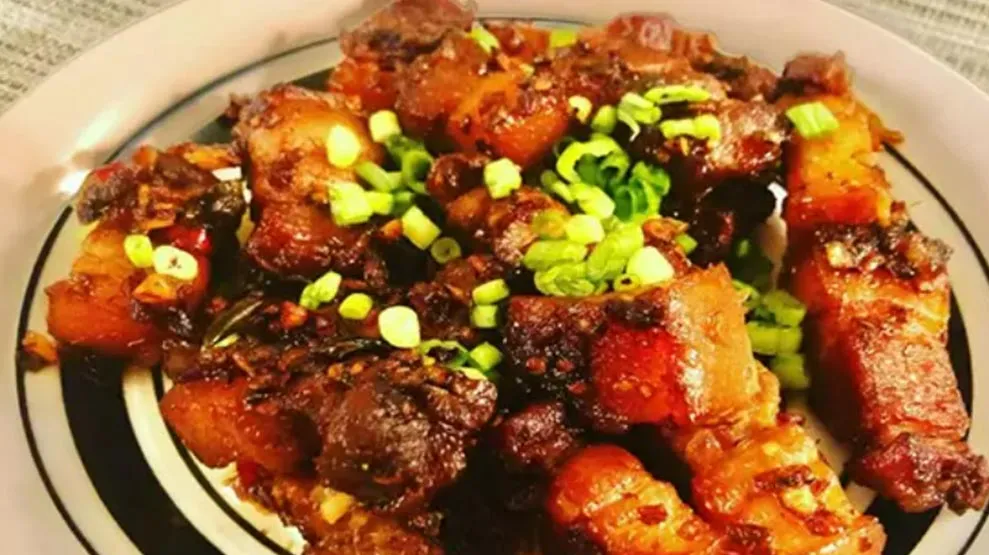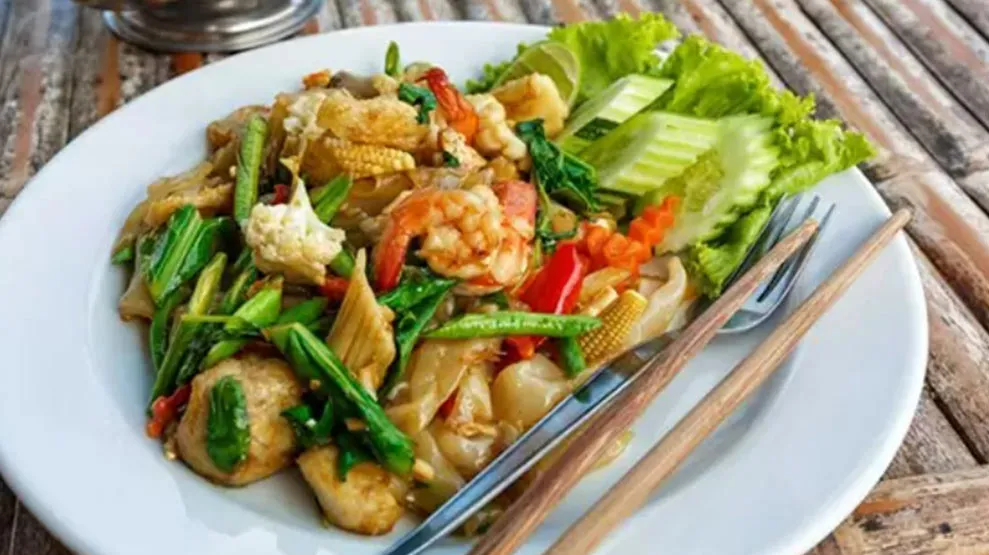


Introduction: The Soul of Mizoram on a Plate
Nestled in the rolling hills of Northeast India, Mizoram is often celebrated for its lush landscapes, vibrant tribal culture, and clean cities. But what truly sets it apart is its culinary identity—a unique blend of indigenous traditions, locally-sourced ingredients, and subtle influences from North Indian and East Asian cuisines.
Rice is the staple of every meal, accompanied by meat, fish, fermented ingredients, and fresh herbs. With minimal use of oil and spices, Mizo cuisine focuses on natural flavors and nutritional value, offering a refreshing contrast to the spicier food of mainland India.
What Makes Mizo Food Unique?
Mizo cuisine is defined by its:
- Light and healthy preparation methods
- Use of fermentation and foraged herbs
- Deep-rooted tribal traditions
- Seasonal and sustainable ingredients
Here are some indigenous ingredients that form the foundation of Mizo dishes:
Key Ingredients & Local Spices in Mizo Cuisine
Bekang – Fermented soybean paste, rich in umami
Sa-um – Fermented pork fat, used as a flavor enhancer
Lengmaser – A citrusy herb akin to lemongrass
Chingiit – A Szechuan pepper-like spice with a numbing effect
Bahkhawr – Also known as Asian cilantro or culantro
Bird’s Eye Chili – Extremely spicy and essential in Mizo chutneys
Traditional Mizo Dishes You Must Try
Below is a curated list of iconic Mizo dishes—both vegetarian and non-vegetarian—that showcase the culinary diversity of the state.
Bai: The Signature Stew of Mizoram
Nutritious stew made with vegetables, fermented soybeans or pork.
Bai is perhaps the most well-known and versatile Mizo dish. It is made by boiling vegetables with bekang or sa-um, and occasionally includes pork or bamboo shoots. The ingredients change with the seasons, making Bai a true reflection of Mizo home cooking.
Where to Try Bai:
- Red Pepper, Chanmari, Aizawl
- Mizo Diner, Zarkawt, Aizawl
Chhum Han: Steamed Vegetable Delight
Light, oil-free, and perfect for health-conscious travelers.
Chhum Han is made by steaming vegetables like broccoli, cabbage, and carrots with ginger and tomatoes. With no added oil or salt, it’s a simple yet satisfying dish.
Where to Try Chhum Han:
- Red Pepper, Chanmari, Aizawl
- Mizo Diner, Zarkawt, Aizawl
- L T Mizo Belly Restaurant, World Bank Road
Bamboo Shoot Fry: Earthy and Seasonal
A stir-fried dish featuring bamboo shoots and seasonal herbs.
Often paired with steamed rice, this vegetarian dish highlights Mizoram’s love for earthy, foraged flavors. Sometimes mushrooms or vegetables are added for depth.
Best Time to Try: End of May to August (Bamboo shoot season)
Vawksa Rep: Smoked Pork Heaven
A beloved pork dish that embodies Mizo tribal culture.
Chunks of smoked pork are cooked with herbs, spinach, and mushrooms in this classic non-veg preparation. The pork is dried over smoke, giving it a deep, savory flavor.
Where to Try Vawksa Rep:
- Red Pepper, Chanmari, Aizawl
- Mizo Diner, Zarkawt, Aizawl
- L T Mizo Belly Restaurant, World Bank Road
Sanpiau: Mizo Rice Porridge
A comfort food inspired by Burmese congee.
Sanpiau is a rice-based porridge served hot and garnished with coriander, onions, black pepper, and fish sauce. Originally called “hysan byok” in Burma, it evolved into the beloved “sanpiau” in Mizoram.
Where to Try Sanpiau:
Available in most restaurants and street food stalls in Aizawl
Mizo Den: A Versatile One-Pot Meal
Cooked with or without meat and ground to a smooth consistency.
Made by simmering meat and vegetables until tender and then grinding them together, Mizo Den is both hearty and flavorful. It’s a staple in many Mizo homes.
Where to Try Mizo Den:
- Red Pepper, Chanmari, Aizawl
- Mizo Diner, Zarkawt, Aizawl
- L T Mizo Belly Restaurant
Buhchiar: The Traditional Rice Dish
A historic rice-based dish with cultural significance.
This simple yet flavorful rice dish is often cooked with meat or vegetables. Though traditionally a household dish, restaurants in Aizawl often serve a similar version known as Sawhchiar.
Bekang: Fermented Soybean Magic
Umami-rich and essential to many Mizo dishes.
Bekang can be used raw or cooked with tomatoes and chilies. It’s nutritious, affordable, and deeply tied to Mizo food traditions.
Where to Get It:
Available in local markets for home cooking
Vegetarian Options in Mizo Cuisine
Vegetarians can enjoy:
- Chhum Han
- Vegetarian Bai (request no meat)
- Mizo Den (vegetable version)
When dining out, it’s recommended to inform the staff about dietary preferences to ensure the meal is meat-free.
Recommended Restaurants in Aizawl
Authentic Mizo Food
- Red Pepper, Chanmari
- Mizo Diner, Zarkawt
- L T Mizo Belly Restaurant, World Bank Road
Indian Cuisine
- Mongolia Restaurant (Hotel Regency), Zarkawt
- Zamzo Grill & Kitchen (Hotel Floria), Zarkawt
Korean Food
- Flavor of Korea, Temple Road, Aizawl
Food Festivals of Mizoram
Food is an integral part of Mizo celebrations. Here are some festivals where you can taste traditional dishes in their most authentic form:
Chapchar Kut (March)
The most important spring festival celebrated after clearing forests for jhum cultivation. Includes:
- Cheraw bamboo dance
- Traditional pork dishes and rice beer
Mim Kut (August–September)
Held in memory of the departed and to mark harvest season. Includes:
- Feasting on the first produce of the year
- Community offerings and traditional delicacies
Khuado Kut (Post-harvest, October–November)
A gratitude festival with roots in ancient tribal practices. Celebrated with:
- Lighting pine torches
- Rich communal feasts and local rituals
Canaan Feast (Christmas)
A Christian celebration with:
- Suukmawii (raw pork)
- Kaphlu (local vegetables)
- Joyous community meals
Plan a Culinary Tour to Mizoram
Explore Mizoram not just with your eyes—but with your taste buds. From smoky pork and herbal stews to rice porridge and fermented delights, every dish tells a story.
Written By Pintso Gyatso: Unveiling the Hidden Gems of Northeast India
Pintso, a native of Gangtok, Sikkim, isn't just a travel writer – he's a seasoned explorer. Years spent trekking and mountain biking across the region honed his intimate knowledge of Sikkim and Darjeeling's hidden treasures. Co-founding OurGuest, Pintso's passion extends beyond travel. He champions sustainable tourism, working with local homestays and communities to create enriching experiences that benefit both travelers and the region. From building eco-lodges to collaborating with local guides, Pintso's expertise ensures you discover the authentic Northeast India, one adventure at a time.
For a customized Mizoram Tour experience you can contact us at +91-7669503993 or email to contact@ourguest.in




